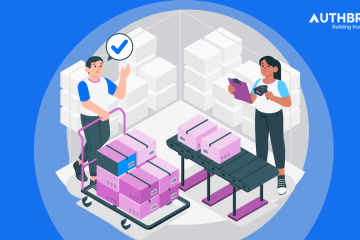A checklist acts as a structured guide that ensures nothing falls through the cracks during the vendor onboarding process. A vendor onboarding checklist lists different stages of the vendor onboarding process.
Vendor Onboarding Checklist
Pre-Screening/Application Stage
- Vendor Name
A name is the most basic identification you can acquire about your vendor. Knowing their name helps you keep track of who they are and the person you’re dealing with, ensuring clarity in communication and documentation of processes. - Contact Number
Having the contact number of your vendor allows you to connect with them easily in case of anything. Whether it’s some future discussions, clarifications, or updates regarding their onboarding process, it’s essential to maintain communication throughout the process. - Email Address
Other than a contact number, an email address serves as another primary mode of communication. It allows for a written mode of communication and sharing of documents, forms, and other necessary information. - Product line
Understanding your vendor and the product line they deal with is essential for any organisation before onboarding them. It provides insight into the type and quality of products/services they provide, which is essential for evaluating their suitability as a potential partner. - City
It’s important to know your vendor’s city and their geographical location. This can help you in understanding any regional factors that might impact the partnership. - State
Similar to knowing the city of your vendor, it’s important to know the state they reside in. This provides additional geographical information related to the vendor. - Business Entity Verification
It’s essential to confirm the business entity of a vendor. This includes confirming the legal status and legitimacy such as verifying details like business name, registration status, and legal structure. - Business Number
Every business has a unique number assigned for tax purposes. This number is essential for tax reporting, compliance, and communication with tax authorities. - PAN
PAN, also known as Permanent Account Number, is a unique identification number assigned to individuals and entities for tax purposes by the Income Tax Department. - GST
Good and Services Tax (GST) is a value-added tax levied on the supply of goods and services in many countries. It’s essential for organisations to ensure that the vendor is authorised to collect GST on behalf of the government. - Financial Details Verification
Conducting a thorough background verification on employees is essential to assess their reputation, reliability, and past performance. This includes verifying their basic details like business history, and past relationships, or simply gathering feedback from previous partners or clients. - Bank account
While collaborating with a vendor, it becomes necessary to have their bank details. This step helps you in verifying the vendor’s bank account details to facilitate transactions between the organisation and the vendor. - Bank statement
Along with collecting their bank account details, organisations should also request the vendor’s bank statements. This provides additional insights into their financial stability.
Selection & Onboarding
- Vendor Pre-requisites
Note down the pre-requisites that the vendor should have such as the legal and compliance requirements, quality certifications and other compliances and must-haves. Also, define the success metrics and scope of work. The same can be put into the contract. - Signing the contract by both parties
Now that you’ve formally drafted a contract, it’s time to formalise the relationship between the company and the vendor. To do so, both parties must review and sign the contract to indicate their agreement to the terms. - Setting up the vendor account
Basis the details provided in the pre-screening stage, create the vendor’s account in the company’s system.
- Performance Auditing
Once you’ve onboarded your vendor, it’s essential to continuously monitor and track their performance against the success metrics and take corrective actions as required.
- Assessment & Concluding the Contract
Thoroughly review the performance of the vendor against the agreed-upon metrics to ensure things are on track - Conclude the contract/Renew or Revise the contract
Based on the assessment and review of their performance, renew or revise the contract.

Vendor Termination Process: How to Reduce Risks?
Every business undergoes the process of changing priorities and that’s when they feel the need to terminate some of their vendor relationships. The vendor offboarding process requires thoughtful planning, clear communication, and meticulous attention to detail.
Vendor Termination is the process of removing a vendor’s access to the systems and resources of a business entity. Effective termination requires transparent communication, mutual understanding, and adherence to agreed-upon protocols to mitigate potential conflicts or disruptions. Following are athe few points to follow during offboarding:
Review Contract Terms
As you stand at the crossroads of your contract renewal or termination with your vendor, the first step is to review the intricacies of your agreement thoroughly. Reviewing the contract terms includes deciphering essential details such as the notice period or associated fees.
Initiate Communication
Now that you’ve thoroughly verified the contract terms, it’s time to embark on the next step of your journey: clear communication with the vendor. Reach out to your vendor with clarity and purpose. If possible, document this exchange to capture the essence of your conversation to be clear about facts such as reasons for leaving, etc.
Data Return and Security
As you prepare to bid farewell to your vendor, ensure that the path to departure is paved with security and diligence. Ensure that you’ve carefully safeguarded the process for the return of all important data. Establish a secure process for the return of such data to mitigate the risk of data breaches or unauthorized access
Final Invoice and Payments
Settle all outstanding invoices and remaining payments in accordance with the contract terms to ensure that all financial obligations are met.
Exit Feedback
One last step before you allow your vendor to leave is to conduct an exit interview. This provides an opportunity for feedback which can then be used for valuable insights for future vendor relationships.
Vendor Termination Checklist
- Review Contract Terms:
- Termination Clauses: Review the contract for specific termination procedures and notice periods.
- Obligations: Ensure all contractual obligations are fulfilled before termination.
- Notice of Termination:
- Written Notice: Provide formal written notice to the vendor as per the contract terms.
- Documentation: Clearly state the reasons for termination and keep a record for future reference.
- Settlement of Accounts:
- Outstanding Payments: Process any pending payments and reconcile accounts.
- Invoices: Ensure all vendor invoices are cleared and documented.
- Return of Property:
- Company Property: Recover any company property, such as equipment or documents, from the vendor.
- Intellectual Property: Ensure return or destruction of any proprietary information.
- Data and Access Termination:
- System Access: Revoke vendor access to company systems and data.
- Data Protection: Confirm that all data shared with the vendor is returned or securely destroyed.
- Internal Communication:
- Stakeholders: Inform all relevant internal stakeholders about the termination.
- Systems Update: Update internal records and systems to reflect the vendor’s termination.
- Performance Review:
- Final Review: Conduct a final review of the vendor’s performance, documenting any issues.
- Lessons Learned: Record lessons learned to improve future vendor relationships.
- Legal and Compliance:
- Compliance Issues: Address any legal or compliance issues related to the termination.
- Documentation: Ensure the termination process is well-documented for legal purposes.











